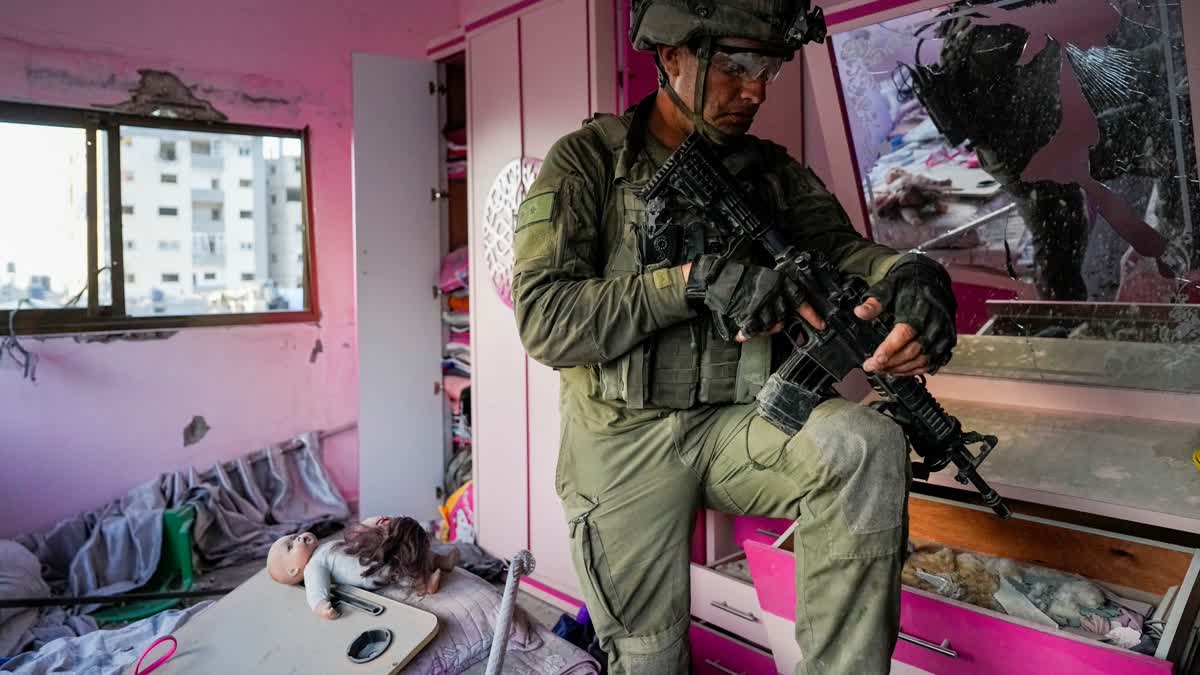JERUSALEM:Prime Minister Benjamin Netanyahu didn't elaborate when he said this week that Israel would maintain indefinite "overall security responsibility" in Gaza once it removes Hamas from power in response to a deadly Oct. 7 cross-border raid by the Islamic militant group.
Experience suggests that any Israeli security role will be seen by the Palestinians and much of the international community as a form of military occupation. This could complicate any plans to hand governing responsibility to the Palestinian Authority or friendly Arab states, and risk bogging Israel down in a war of attrition.
Even if Israel succeeds in ending Hamas' 16-year rule in Gaza and dismantling much of its militant infrastructure, the presence of Israeli forces is likely to fuel an insurgency, as it did from 1967 to 2005. That period saw two Palestinian uprisings and the rise of Hamas.
Benny Gantz, of Israel's three-member War Cabinet, acknowledged Wednesday that there's still no long-term plan for Gaza. He said any plan would have to address Israel's security needs.
"We can come up with any mechanism we think is appropriate, but Hamas will not be part of it," he told reporters. "We need to replace the Hamas regime and ensure security superiority for us."
Here's a look at what a lingering Israeli security role might look like and the opposition it would inevitably generate.
OUTRIGHT OCCUPATION-In the 1967 Mideast war, Israel captured Gaza, the West Bank and east Jerusalem, territories the Palestinians want for a future state. Israel annexed east Jerusalem, home to the Old City and its sensitive religious sites — a move not recognized by the international community — and considers the entire city its capital.
The military directly governed the West Bank and Gaza for decades, denying basic rights to millions of Palestinians. Soldiers staffed checkpoints and carried out regular arrest raids targeting militants and other Palestinians opposed to Israeli rule.
Israel also built Jewish settlements in all three areas. Palestinians and most of the international community consider these settlements illegal.
After two decades of outright military rule, Palestinians rose up in the first intifada, or uprising, in the late 1980s. That was also when Hamas first emerged as a political movement with an armed wing, challenging the secular Palestine Liberation Organization's leadership of the national struggle.
THE WEST BANK MODEL-Interim peace deals in the mid-1990s known as the Oslo Accords established the Palestinian Authority as an autonomy government in the West Bank and Gaza meant to lead the way toward an independent Palestinian state alongside Israel.
Several peace initiatives by a string of American presidents failed. The Palestinian Authority lost control of Gaza to Hamas in 2007.
That has left the Palestinian Authority in charge of roughly 40% of the Israeli-occupied West Bank. Its powers are largely administrative, though it maintains a police force. Israel wields overall security control.
Palestinian President Mahmoud Abbas is deeply unpopular, in large part because his forces cooperate with Israel on security even as Palestinian hopes for statehood have all but disappeared. Many Palestinians view the PA as the subcontractor of a never-ending occupation.
Israel keeps tens of thousands of soldiers deployed across the West Bank. They provide security for more than 500,000 Jewish settlers and carry out nightly arrest raids, often sparking deadly gunbattles with militants.
U.S. Secretary of State Antony Blinken has suggested the Palestinian Authority could return to Gaza after the war. That could further unravel Abbas' legitimacy among his own people, unless it were linked to concrete steps toward Palestinian statehood.
Arab leaders, even those closely tied to Israel, will likely face similar backlash if they step in to help it control Gaza.
THE GAZA MODEL-What about an over-the-horizon presence, with moderate Palestinians maintaining security inside Gaza and with Israel intervening only when it deems absolutely necessary?
